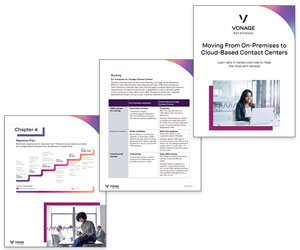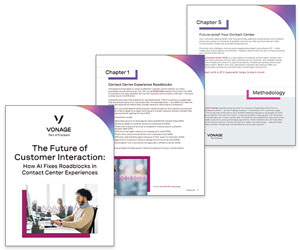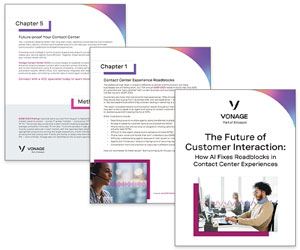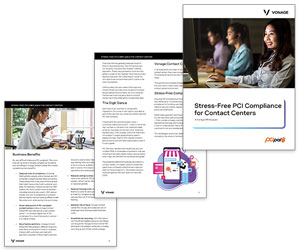How can contact centres become more proactive? Being proactive could really help to drive up customer satisfaction and help to reduce customer effort.
We asked our panel for their opinions.
Use idle time to increase outbound contacts
Now is absolutely the right time for contact centres to become more proactive, which can be done with the staff you already have. Anticipating customers’ needs is a key weapon in reducing operational costs, ensuring a productive team and ultimately increasing customer satisfaction with the service they receive.
There are many ways in which contact centres can ensure that they become more proactive. In telemarketing or collections, the most obvious way for contact centres to be more proactive is to increase their outbound contact efforts. However, this is only possible if existing communications are streamlined, dialling technology is optimised, outbound campaigns and strategies are created and processes are made as efficient as possible. Combining a workforce optimisation strategy could identify usable idle time to plough back into outbound operations. However this is only half of the story.
Call avoidance
Call avoidance is quickly becoming the mantra of choice for many organisations to reduce both customer effort and the costs associated with unnecessary, or avoidable, calls into the business from customers. This is particularly popular with organisations in markets such as retail and utilities due to the high volume of orders, enquiries, deliveries and face-to-face time with customers. This approach means that the customer is automatically fed information they may require to remove the need for them to contact the organisation.
Offering web chat on the website
I had a recent experience with a retailer who proactively contacted me at every point of my purchase – when browsing online, a live agent on instant chat asked if I needed any assistance, which I did. The instant messaging was then converted into a call from them and ultimately, a purchase.
Sending emails and texts for delivery dates
An email followed with extensive details of the purchase and roughly when the delivery would be made. After this, I was given an exact date for the delivery and on the day of delivery, was texted the two-hour time slot in which it would arrive. The driver then called me when he was 30 minutes away and I received a follow-up email thanking me for my purchase and directing me to the right place should I have any further queries. The experience was fantastic and I only wish all retailers would operate a similar strategy, as although they have spent time contacting me, I am extremely satisfied, and they have avoided me having to contact them at any point.

Richard Piatkowski
The key takeaway from this is that by truly maximising the use of multi-channel contact, whilst automating processes at a few key points in the transaction, the contact centre has increased productivity whilst potentially increasing sales for the retailer as I would definitely buy from them again.
Richard Piatkowski, Head of Retail, Aspect Software (www.aspect.com)
Provide welcome calls
Exceptional service in the customer’s eye is often associated with a supplier ‘going the extra mile’.
For example, a welcome call – out of the blue. A gift, a free upgrade, an advisor seeking out a solution and making an unprompted callback. While customers know that suppliers aren’t acting out of altruism, the unexpected is invariably well received.
Make sure the timing is right
The key to making such actions profitable rather than just ‘nice to do’ is often down to timing.
A welcome call made at the beginning of a relationship, for example, can catch the customer at a point where they are looking to make the most of what they’ve just bought and are open to new ideas. An offer made at the point a customer is coming to the end of a contract can be just what’s required to prevent them moving to a competitor. And an action made in response to a complaint – and near to the time the complaint was made – shows clearly that an organisation listens to its customers.

Michael Gray
Managing customer relationships shouldn’t just be about running big campaigns and handling individual complaints – it should be about proactively managing the customer’s needs throughout the customer lifecycle. It’s something that often talked about but rarely done well.
Michael Gray, Marketing Director, Ultra Communications
Identify issues that affect most customers
In order to become more proactive contact centres should probably break down the task into more manageable goals. Firstly identify what you want to focus on, those issues which affect the largest number of customers or those affecting the most profitable group of customers, or any other parameters that can be used to segment.
Following this you need to do some analysis work to identify commonalities or patterns in the everyday occurrence of issues amongst this segment of customers. Tools like speech analytics can be particularly useful in this area by setting up specific queries to search across the thousands of conversations which have occurred to identify and pinpoint certain trends or problem areas.
Once you know the right queries to run against the right call criteria you can proactively start addressing the issues by identifying whether the fault lies in a process, a technology issue or human error and start taking remedial action accordingly.
Use customer feedback tools to flag issues to senior management
Customer feedback tools are also a good way of becoming more proactive, by using the feedback to address common gripes and suggestions for improvement, giving the contact centre the chance to initiate positive change before a smaller issue becomes a much bigger one.
Some of the feedback technologies available today are very good at identifying themes and can trigger alerts back to senior management who can track them and proactively start addressing the issues as soon as they are commented upon.
Do what-if scenarios to predict staff levels

Tracy McAvoy
Lastly, make sure you are using your WFM forecasting capabilities to the utmost. The historical volumes it captures will help to make forecasts more accurate as it will take into account seasonality and extreme events. Use “special patterns” wherever possible to replicate known events such as marketing campaigns. Also take advantage of “what if” scenarios to provide options on staffing levels. Contact arrival can also be monitored using the real-time management screens so if actual volumes are deviating from plan, changes can be made quickly. Also consider using a flexi-shift in your schedules where additional resource can be deployed at short notice.
Tracy McAvoy, Business Systems
Pinpoint poor business procedures
Occasionally contacts centres are reactive due to unexpected events that are difficult to predict, but more often the blame lies with past procedures or actions that simply fall short of customers’ expectations. To become more proactive, contact centres need to discover what’s stopping them from surpassing current service levels and what tools are available to help overcome the barriers.
So where do you start? In our experience one of the key areas that will help you to pinpoint and end poor business procedures is Quality Assurance. As one of our customers told us recently, ‘If you can’t measure it you can’t manage it’.

Carl Adkins
One of the major drawbacks of many QA programmes is that information is slow to be fed back to management (teams are still relying on time-consuming spreadsheets) or worse still, crucial data stays with the team leader and does not reach managers at all.
With the right information management system, managers can see where vital parts of the business process are being overlooked. For example, in the financial services sector a loan application may be fully compliant, but if the agent has omitted to request just a single a piece of information, this may mean they have to re-contact the customer to complete the sale. Not only is this frustrating for the customer but it is also counter-productive for the business itself.
Carl Adkins, CEO at Infinity CCS (www.infinityccs.com)
Recognise customers and route them to the right place
Align processes to support the customer, not necessarily to minimise costs. Technology can help a lot here too, but recognising customers immediately and understanding their history provides great insight into how that call should be handled.

Tim Pickard
A customer that has made multiple calls in 24 hours, for example, should be recognised and routed to a specialist team as they are obviously having difficulty. A low post-call survey score on a prior call may trigger the same outcome. Similarly, a VIP customer should be handled appropriately, recognising their importance to the business.
Tim Pickard, NewVoiceMedia
In what ways are you proactive in your contact centre? Leave your comments in an email to Call Centre Helper
Author: Jo Robinson
Published On: 5th Dec 2012 - Last modified: 15th Aug 2025
Read more about - Customer Service Strategy, Alvaria, Business Systems, Carl Adkins, Infinity CCS, Service Strategy, Ultra, Vonage




















If you want to be more proactive than contact centers need to strive to eliminate customer thrashing! Where do your self service channels fall short? How can you improve the customer experience from every angle?
How about reduce complexity and ring fencing of staff and also increase cross training?
That way you reduce the likelihood of having both a customer and an agent sitting waiting.
James